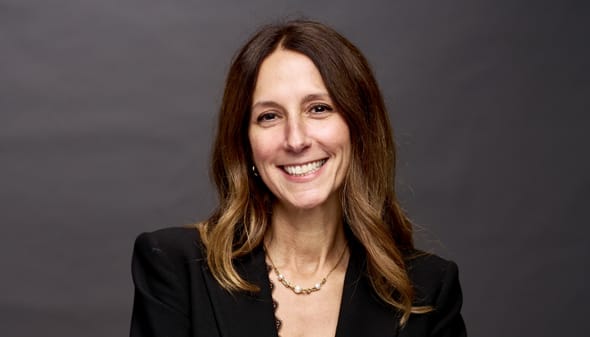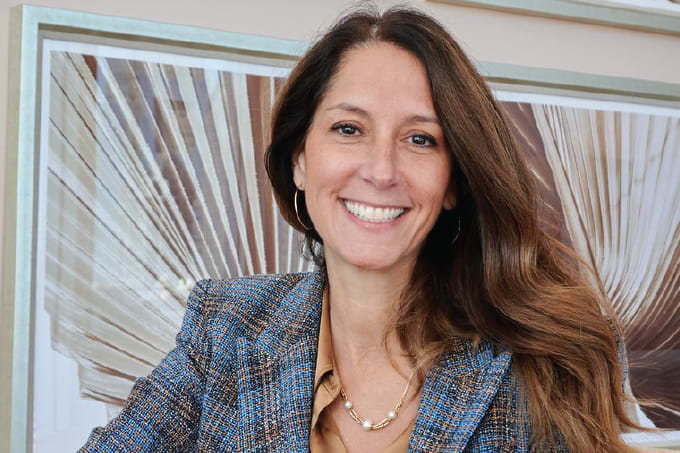"The first patient’s biopsy came back with no evidence of leukemia. When Carl saw the email from David Porter, he said, 'I don’t believe it – it’s too good to be true.' A repeat biopsy confirmed it. Then the same happened with the second and third patients. Two complete responses, one partial."

When the first patients at the University of Pennsylvania received an experimental treatment for leukemia, the results went far beyond expectations and ultimately led to the world's first CAR T cell therapy: Kymriah. Alongside Carl June and others, Bruce Levine was one of the scientists involved. Today, he is the Barbara and Edward Netter professor in cancer gene therapy at the University of Pennsylvania, as well as a former president of the International Society for Cell and Gene Therapy (ISCT). He also chairs ISCT's committee on ethics in cell and gene therapy. As he puts it: "Once you're with ISCT, it's kind of an addiction to stay with them."
We spoke with him to learn more about his career, ISCT, and his experience with the Kymriah studies.
What first inspired your interest in science and medicine?
My father was a research scientist, and my mother was a nurse. So I grew up in a scientific and medical household during the Apollo era, but I quickly realized I wasn’t going to be an astronaut, and astronomy seemed to involve more math than simply looking at the stars. That pushed me toward biology.
I knew I didn’t want to go to medical school, so I looked toward graduate school. As an undergrad at the University of Pennsylvania, I worked part-time in a lab to earn some money and was exposed early to cell culture. After graduation, my father suggested I take a full-time lab job before committing to grad school – just to make sure it was what I really wanted.
I took a technician position at the Children’s Hospital of Philadelphia, working on immune assessments in clinical trials for the varicella (chickenpox) vaccine. Seeing children come in really drove home the importance of research for patient benefit and the experience sparked my interest in translational research. For grad school at Johns Hopkins, I purposely chose a hospital-based lab for my thesis work. Walking past patient wards every day was a reminder of why the research mattered.
While working on T-cell signaling, I read papers by Carl June and applied to his lab for a postdoctoral fellowship. With a background in cell culture and immunology, Carl put me on a project to improve T-cell growth. That work led to a reagent now used worldwide in research and clinical trials. Soon after, Carl asked how would I like to start and run a lab to manufacture T cells for clinical trials of adaptive immunotherapy. It felt like the perfect match for everything I’d been training for. We started that lab in 1995 and began our first clinical trial in 1996.
How did you get involved with the development of the world's first cell therapy – Kymriah?
Before Kymriah (tisagenlecleucel), we worked on a CAR clinical trial in HIV with a company called Cell Genesys in the late 1990s. When we moved to Penn in 1999, Carl was intent on expanding CAR research into cancer. We secured philanthropic funding to start preclinical work targeting CD19 in B-cell malignancies. We called it CART19. The first clinical trial opened in 2010, and after treating three patients, we ran out of money. Cell and gene therapy just wasn’t quite as popular then!
So we published. Those results drew attention from companies and investors, and that’s how the alliance with Novartis began. CART19 became CTL-019 under Novartis, then tisagenlecleucel, and finally the brand Kymriah.
Can you remember how you felt when you realized the therapy was going to work?
Up to that point, our clinical trials measured modest signs: a rise in T-cell counts, maybe a tumor reduction. But this was our first gene-modified CAR trial in cancer. We didn’t know what to expect. Maybe nothing, maybe just a hint.
That summer and fall of 2010, patient samples showed rising CAR T-cell counts. The protocol called for a day-28 bone marrow biopsy. The first patient’s biopsy came back with no evidence of leukemia. When Carl saw the email from David Porter, he said, “I don’t believe it – it’s too good to be true.” A repeat biopsy confirmed it. Then the same happened with the second and third patients. Two complete responses, one partial.
These patients had chronic lymphocytic leukemia, refractory to all available treatments. They carried between two and eight pounds of leukemia, which was completely eradicated within weeks. That fall of 2010 was when we knew we had something truly striking.
Since Kymriah, how have CAR T therapies advanced? Are we in a golden age of cell and gene therapy?
Yes, I think we are – and we can advance even further. Right now, seven CAR T-cell therapies are approved in the US, Europe, and elsewhere: five for leukemia or lymphoma, two for multiple myeloma. There are additional approvals in China, India, and Spain. Altogether, more than 50,000 patients worldwide have received CAR T therapy.
Many respond, some relapse, and some don’t respond at all. So we still have work to do to improve efficacy, expand into solid tumors, and broaden applications.
What are the biggest challenges in the field right now, and what is ISCT focusing on?
There are technical challenges: scaling from research to clinical application, addressing chemistry, manufacturing, and controls (CMC), and defining potency for living drugs. There are also communication and ethical challenges. We must do a better job explaining what cell and gene therapy is, why it matters, and its value – not just to scientists, but to neighbors, relatives, legislators, and funders.
Globally, regulatory disruption is a huge issue. Regulators are facing technologies unlike anything they’ve seen before, so ISCT brings regulators together at our annual Global Regulatory Forum for closed-door discussions. There we consider issues such as rare diseases and alternative approval pathways. We’re also running a leadership course in cell and gene therapy, streamed directly to FDA staff, to keep regulators up to date.
Another challenge is misinformation. Shady actors are directly marketing unproven stem cell or exosome therapies to the public. These can cause real financial and medical harm, and they risk undermining legitimate science.
How are you inspiring the next generation of scientists?
By reaching out and communicating through ISCT meetings, webinars, and even creative projects. One unusual thing I did was co-write a song about CAR T cells, recorded by Mags McCarthy and released commercially in May. It has a music video and public service announcements on US radio, pointing listeners to a website with resources on CAR T therapy.
It’s about honoring the heroism of clinical trial patients, and all patients really, raising awareness of science, and combating misinformation. We have to move beyond scientific jargon, and learn to explain our work in everyday terms. I often tell students: how would you explain CRISPR or base editing to your neighbor? That mindset matters.
You've also recently published a paper on innovations in CAR T immunotherapies...
We wanted to focus not just on the present, but on the future. The paper highlights three areas that can advance CAR T therapy – also published in the special edition of Cytotherapy. First, armoring T cells. Cancers hide from and suppress the immune system. We’re engineering T cells to resist these effects; for example, by integrating anti-tumor cytokines like IL-18 into CAR constructs. Second, genetic enhancement. CRISPR has allowed systematic screens of T cells, identifying genes that can enhance or suppress function. That opens new targets for improving T and other immune cells. And third, in vivo CAR T-cell generation. Current therapies are labor-intensive – extracting, growing, and modifying cells in the lab before reinfusion. With in vivo approaches, namely, delivering viral vectors or lipid nanoparticles directly, we can generate CAR T cells inside the patient’s body. That could make treatment far more scalable.
Where do you see future research priorities?
Funding is a big challenge. There’s tremendous excitement around new therapies, but also uncertainty around sustained science funding. Our mission, whether through ISCT, universities, or professional organizations, is twofold: push forward with the science, and communicate its value. At the end of the day, our goal is to treat disease and save lives, and we have to make that clear to the public.




